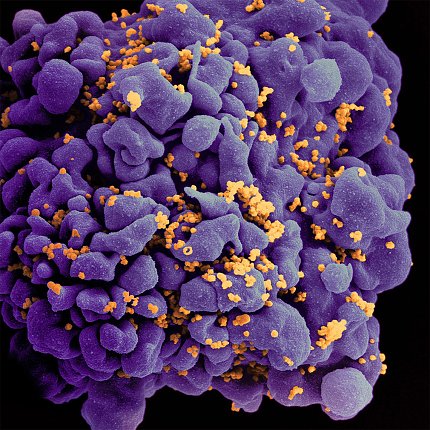New Insights into HIV Latent Cells Yield Possible Cure Targets

Photo: NIAID
Scientists from NIAID’s Vaccine Research Center and colleagues used cutting-edge technology to reveal new insights into cellular reservoirs of HIV. These new insights could have big implications toward an HIV cure.
An enhanced understanding of the HIV-infected memory CD4+ T cells that persist over decades in individuals taking antiretroviral therapy has been a long-time goal of HIV cure researchers. However, technology limitations have made it difficult to isolate or analyze these individual cells. As a result, scientists have been unable to determine whether the cells possess distinctive attributes that HIV-cure-directed therapies may exploit.
At the International AIDS Conference in Montreal, Dr. Eli Boritz, chief of the virus persistence and dynamics section in the VRC Laboratory of Immunology, described NIAID’s longstanding collaboration with a bioengineering research group at the University of California, San Francisco.
The researchers developed a custom microfluidic sorting technology—Focused Interrogation of Cells by Nucleic Acid Detection and Sequencing (FIND-Seq). This technology defines gene expression patterns from rare cells harboring latent HIV, allowing messenger RNA capture and virus DNA detection to be performed sequentially while maintaining segregation among cells.
The scientists applied the FIND-Seq technology to blood cells from 6 people with HIV who had begun taking ART while chronically infected and who had experienced more than 1 year of viral suppression. They found clear differences between the HIV-infected CD4+ T cells and their uninfected counterparts, including gene expression patterns linked to the suppression of multiple steps in the HIV lifecycle and to cell survival and proliferation.
The scientists maintain these results indicate that the HIV-infected memory CD4+ T-cell reservoir is a distinctive cell population that may be uniquely susceptible to specific targeted therapies. In this regard, the study reinforces recent interest among scientists in improving upon HIV cure strategies that are based on latency reversal by incorporating drugs that relieve blocks at multiple HIV lifecycle steps, and by combining these with agents that potentiate physiologic cell death.
